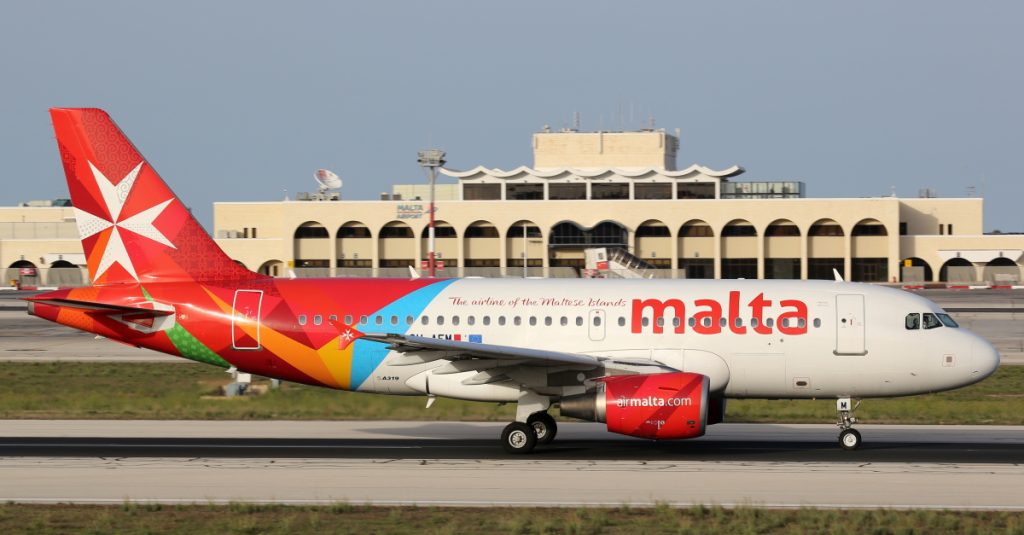The Maltese aviation sector is set for a transformative change as KM Malta Airlines takes to the skies this Easter Sunday. Following the cessation of Air Malta’s operations, the new carrier promises to bring enhanced connectivity and service to the region.
This shift not only marks a new chapter for air travel in and out of Malta but also underscores the government’s strategy to bolster the nation’s aviation industry within EU regulations. The transition, led by strategic planning, is poised to establish KM Malta Airlines as a key player in the European circuit.
Transition to KM Malta Airlines
From Easter Sunday, KM Malta Airlines will officially take over as Malta’s national carrier, succeeding Air Malta, which will cease operations the previous night. This transition marks a significant shift in the nation’s aviation landscape, with the new airline poised to redefine Maltese air travel. The change comes as part of a strategic effort to revitalise the country’s aviation sector.
KM Malta Airlines is set to operate flights to 17 European destinations, including prominent UK airports Heathrow and Gatwick. It will utilise a fleet of eight Airbus A320neos, inherited from Air Malta. This operational shift is anticipated to enhance connectivity and bring more efficient service to passengers.
Government’s Strategic Decision
The decision to replace Air Malta with KM Malta Airlines was prompted by the need to comply with EU regulations on state aid. In August 2022, the Maltese government announced plans to dissolve Air Malta, avoiding breaches of EU rules by discontinuing financial support to the ailing carrier. This move was intended to prevent further economic strain and reposition Malta’s aviation future positively.
Air Malta had been struggling financially, with unsuccessful attempts to secure €290 million in state aid, which was rejected by the European Commission. This decision was followed by significant network reductions and lower flight frequencies announced in late 2022. The government confirmed the airline’s dissolution from March 30, 2024, with a new entity ready to assume its role.
New Operational Focus
KM Malta Airlines aims to operate a more streamlined network, approximately half the size of what Air Malta had before the pandemic. Flight tickets have been available for purchase since December, with proactive measures taken to refund customers previously booked with Air Malta.
The new airline hopes to balance profitability and service reliability while fostering regional accessibility. The government has expressed interest in partially privatising the airline once it achieves financial stability, while maintaining a controlling stake to oversee strategic direction.
Despite inheriting Air Malta’s assets, KM Malta Airlines will maintain the former’s branding temporarily. The transition phase is expected to leverage the new airline’s competitive fares and service offerings to capture a significant market share.
Market Reception and Competition
The introduction of KM Malta Airlines has been met with optimism in the UK market, particularly due to the attractive business class and flexible economy fares, reported by Visit Malta. These offerings are designed to appeal to both individual travellers and tour operators, facilitating group travel arrangements.
However, the new carrier is anticipated to face fierce competition. Low-cost airlines like Ryanair, easyJet, and Wizz Air are already well-established in the region. Notably, Ryanair, in collaboration with the Maltese government, operates Malta Air, adding a competitive layer to the marketplace.
These dynamics suggest that while KM Malta Airlines enters an already saturated market, its unique value propositions and strategic operations could carve a successful niche for itself.
Industry Insights and Future Prospects
The relaunch of Malta’s national airline is more than just a change in branding; it represents an aspiration to enhance travel experiences and meet evolving passenger expectations. Tolene van der Merwe, Visit Malta UK and Ireland director, expressed excitement over the potential of the new carrier to set industry benchmarks.
The airline’s future success may depend on its ability to sustain operational excellence amidst competitive pressures and align with Malta’s broader tourism strategies. Future plans to privatise the airline, should profitability be achieved, indicate a potential for dynamic corporate governance and innovation.
This structural change is perceived as a proactive response to external economic pressures and domestic market needs. As KM Malta Airlines prepares to take flight, its trajectory will be closely watched by industry analysts and potential investors alike.
Conclusion
In summary, KM Malta Airlines’ inauguration as Malta’s new national carrier signifies a pivotal moment for the country’s aviation industry. With strategic planning and an eye on sustainable growth, this transition is set to redefine Maltese air travel.
The introduction of KM Malta Airlines heralds a fresh era of innovation and competition in Malta’s aviation. Strategically positioned to navigate market challenges, the airline’s success will depend on maintaining operational excellence and meeting the needs of its diverse customer base.

